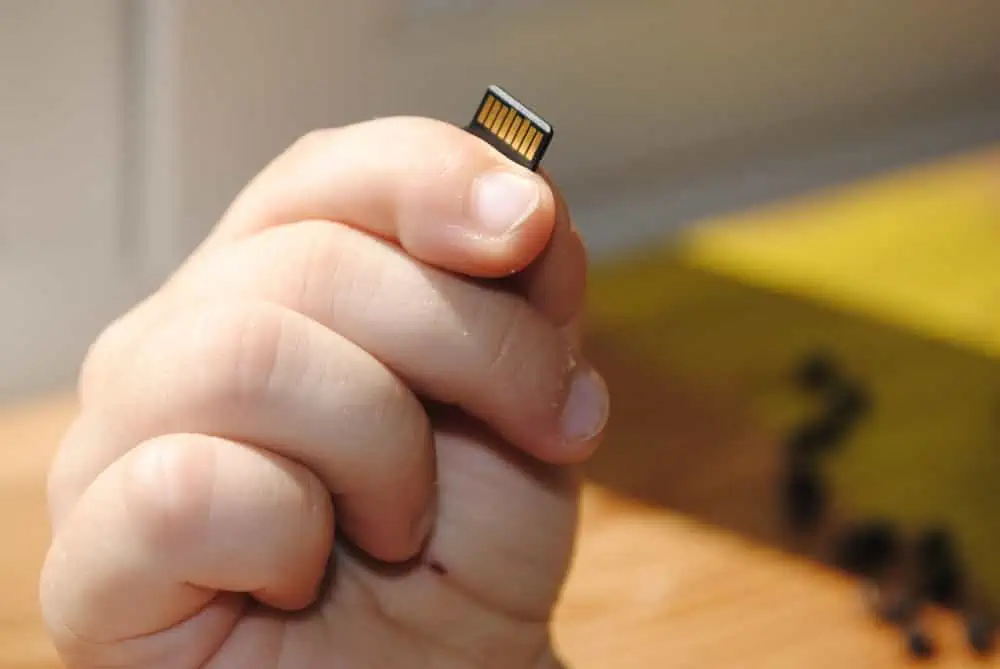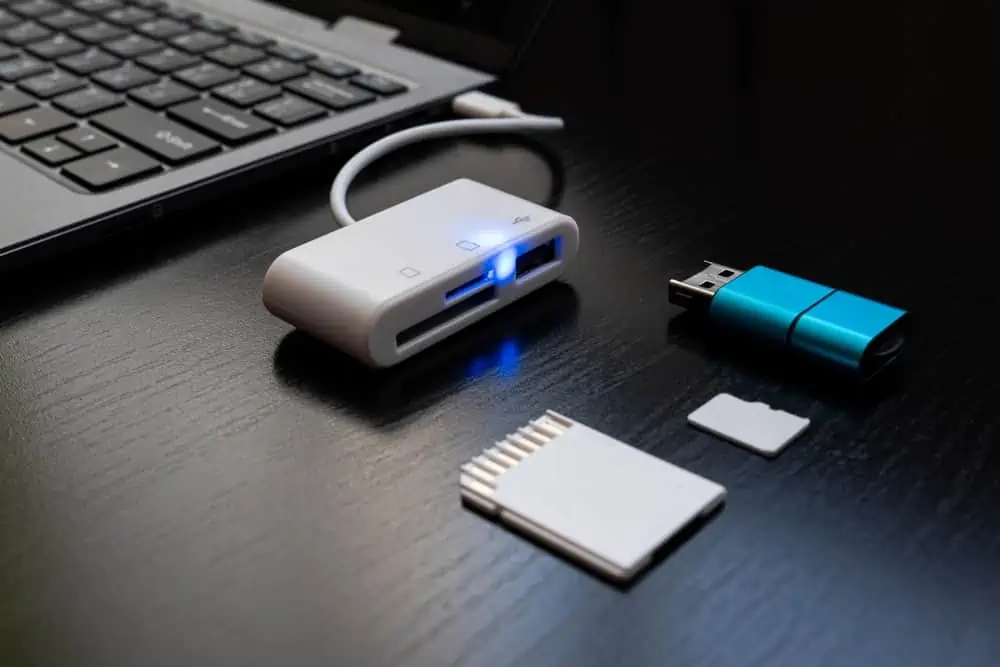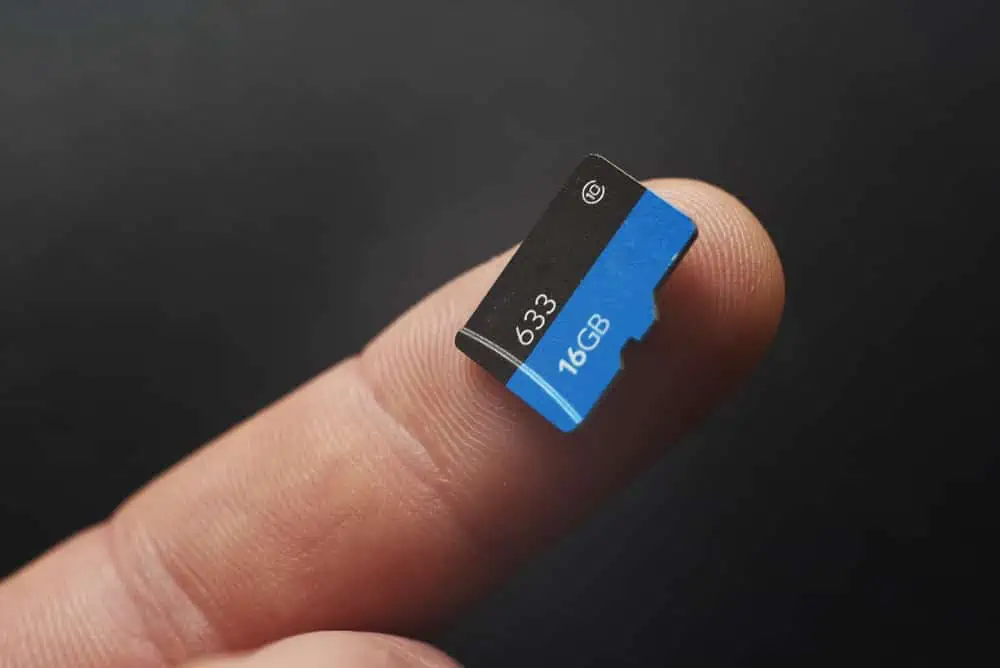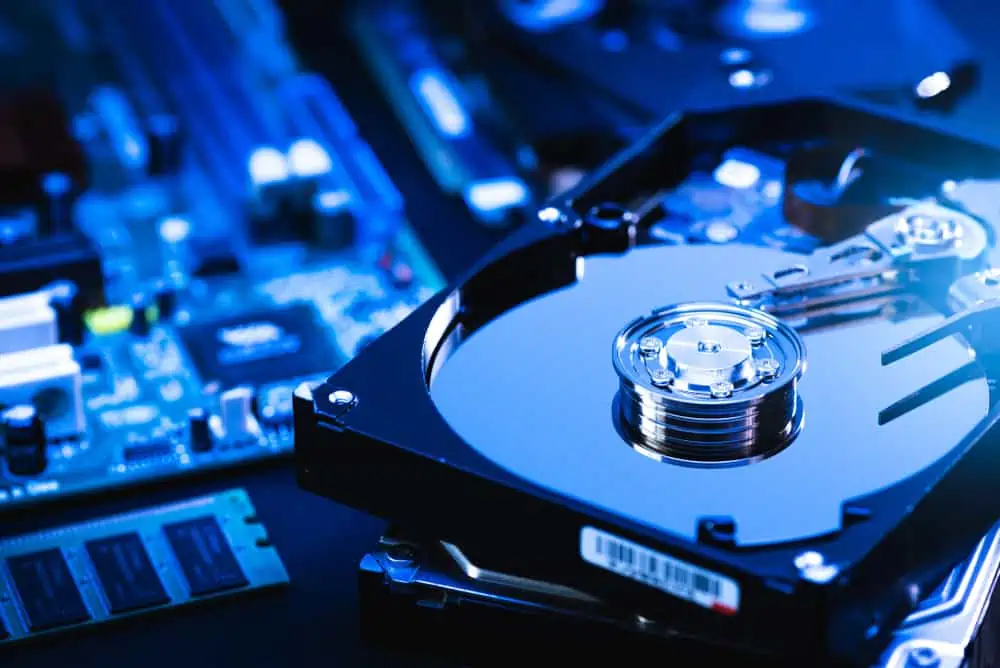Are you curious about the widely used SD card? This comprehensive article provides all the critical information you need to know about this storage technology.
Overview
An SD card (Secure Digital card) is a portable storage device for storing and transferring digital data. In 1999, SanDisk, Toshiba, and Panasonic developed this storage technology, which has since become a popular form of flash memory card.
Furthermore, a Secure Digital card is very small and usually about the size of a postage stamp. Moreover, it was designed to fit into various electronic devices, including smartphones, digital cameras, tablets, and computers.
It is also compatible with MP3 players, video game consoles, and navigation systems.
Similar to other flash storage devices, SD cards use non-volatile memory. Thus, they retain data and information even when you remove it from a device like your computer or smartphone.
This makes them reliable for storing and transferring digital data, including photos, videos, music, and documents.
That said, the storage capacity of a Secure Digital card varies, ranging from a few megabytes to several terabytes. Besides, due to its portable size, you can easily remove or insert this storage technology into a device.
This makes it versatile and ideal for transferring files from one device to another. Moreover, because most devices like computers and smartphones have SD card readers, people consider SD cards as a perfect storage expansion tool.
Features of an SD Card
Now that we know what this storage technology entails, this section will discuss its significant features.
It has Various Types
Several Secure Digital cards exist, including the standard SD, SDHC (Secure Digital High Capacity), and SDXC (Secure Digital Extended Capacity). Additionally, there is SDUC (Secure Digital Ultra Capacity).
As a matter of fact, there are microSD and miniSD cards. Smaller versions of the standard SD card are designed for smaller devices such as smartphones or tablets.
Besides, each type of Secure Digital card offers different storage capacities and sizes.
For example, SDHC cards can support a maximum storage capacity of up to 32GB. Meanwhile, SDXC cards can support a maximum storage capacity of up to 2TB.
There are Several Brands of SD Card
There are numerous brands of SD cards available on the market. This ranges from well-known brands like SanDisk and Kingston to lesser-known brands like Silicon Power.
Moreover, the brand of a Secure Digital card can impact its performance, quality, and reliability. Hence, picking a reputable brand when buying this storage device is essential.
It is Compatible With Most Devices
Most devices nowadays come with a built-in SD card slot, making them compatible with this storage technology. These devices include cameras, smartphones, laptops, gaming consoles, and other digital devices.
However, the devices can support different types of Secure Digital cards and maximum storage capacity. Therefore, it is also important to note the type of SD card your device supports before buying.
Also, you should note the maximum storage capacity limit for a Secure Digital card that your device supports. For instance, an older camera may only support an SD card with a maximum storage capacity of up to 32 GB.
Thus, inserting a Secure Digital card with a larger storage capacity into such a device won’t work.
It is Portable and Lightweight
The physical size of an SD card is typically very lightweight and portable. Specifically, a Secure Digital card is about the size of a postage stamp, making it easy to carry around in a pocket or purse.
This means you can take your saved digital data with you wherever you go, whether traveling, running errands, or just working. Besides, the portability of this storage technology makes it an ideal option for transferring data between devices.
SD Card Support Various Files Systems
An SD card is a flash memory card that supports several file types thanks to its file system. In case you don’t know, a file system is a method of organizing and storing data on a storage device.
Well, a Secure Digital card uses the FAT32 or exFAT file system, which major operating systems like Windows, macOS, and Linux support. This file system allows it to store numerous kinds of files, such as pictures, videos, music, documents, and so much more.
Therefore, any file can be accessed/stored on an SD card as long as the file is compatible with the file system used by the SD card.
Pros of an SD Card
SD Cards are Very Durable
Secure Digital cards are developed to be extremely durable and able to withstand multiple environmental conditions.
They are mostly resistant to shock, extreme temperatures, and water. As a matter of fact, this storage technology can also withstand exposure to X-rays and magnetic fields.
Therefore, the durability of an SD card makes it a reliable option for transferring and storing data, even in harsh environments.
It Offers Adequate Security
SD cards mostly come with built-in security features to protect the content you store on them.
Moreover, some Secure Digital cards offer encryption capabilities that allow the user to encrypt the data stored on the card. Thereby protecting it from unauthorized access.
Besides that, some Secure Digital cards may come with password protection features. With that feature, you will require a password to access data on the card.
These security features will benefit users who store sensitive data on their SD cards, such as confidential documents.
Most SD Cards Have a Write Protection Switch
Most Secure Digital cards available on the market feature a write protection switch.
This switch is a physical switch located on the side of the SD card. Furthermore, it prevents data from being accidentally overwritten or deleted.
When the switch is locked, the storage technology is write-protected, meaning data cannot be written to or deleted. This feature is handy when working with essential data, such as photos or confidential documents.
SD Cards are Portable
The portability of a Secure Digital card is a significant advantage over other storage technology.
This makes it an ideal solution for users who need to transfer data between different devices frequently on the go. In fact, there is a type of Secure Digital card called microSD, which is as small as a SIM card.
SD Cards are Highly Versatile
One of the most significant advantages of an SD card is its versatility.
Secure Digital cards are compatible with various digital devices, making them a flexible and convenient storage solution. For example, they can store photos, videos, and music on smartphones, tablets, laptops, and even gaming consoles.
This means that users can quickly transfer data between different devices without cables or special software.
Cons of an SD Card
They are Prone to Theft
Due to their small form factor, Secure Digital cards are prone to theft.
Due to that, you can lose all the files saved on the Secure Digital card if you don’t have them backed up.
SD Cards Mostly Offer Slow Transfer Speed
Although Secure Digital cards are ideal for transferring data between devices, they mostly have slow read and write speeds.
Thus, transferring data to and from a device using an SD can be slow compared to using other storage technology like SSD.
They are Prone to Data Corruption
Secure Digital cards can be prone to data corruption, mainly if not ejected from a device properly.
A Secure Digital card can also be prone to data corruption if exposed to electrical interference. This can result in the loss of data or the need to format the card.
They are Vulnerable to Physical Damage
Even though SD cards are designed to be durable, they are vulnerable to physical damage due to their compact size.
This can make your Secure Digital card wear off quickly or eventually stop working. Therefore, even though they are durable, handling your SD card carefully is important.
Conclusion
An SD card is a portable and versatile storage device used in most digital devices like smartphones, laptops, and gaming consoles. This small and thin storage device can store various types of files.
Furthermore, SD cards are available in different types, including standard SD cards, SDHC cards, SDXC cards, and SDUC cards. Besides, this storage device varies in storage capacities and is highly durable.
However, due to its extremely small size, it is prone to damage and theft. Nevertheless, Secure Digital cards remain a popular choice for storage expansion and file transfer between devices due to their portability and compatibility.
With all that being said, I hope you found this article interesting and helpful. If you did, click on “Yes” beside the “Was this page helpful” question below.
You may also express your thoughts and opinions by using the “Leave a Reply” form at the bottom of this page.
Finally, check out our Storage & Disk Technology Explained page for more articles like this one.



